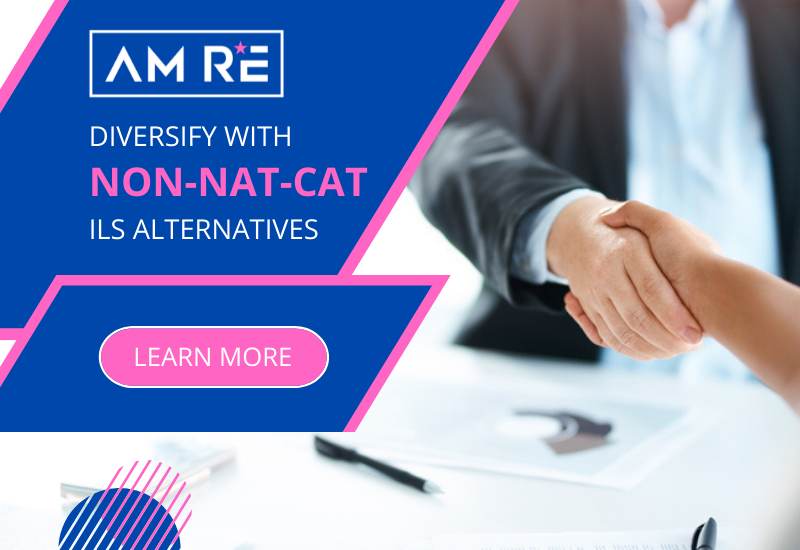Non-nat-cat alternatives the “perfect hedge” for ILS investors: AM RE Syndicate

Amid the increased frequency, scope, and severity of natural catastrophes, insurance-linked securities (ILS) investors stand to benefit from the greater predictability and sustainability of non-nat-cat program-based portfolios of risk, according to AM RE Syndicate.
In a new whitepaper, titled ‘The Impact of Climate Change on the Traditional ILS Market and Non-Nat-Cat Alternatives’, reinsurance MGA, AM RE Syndicate, Inc., argues the case for an investment in insurance-linked products with a focus on the Excess and Surplus lines specialty market.
Of course, the traditional ILS market remains active and attractive to investors, with Q1 2022 another robust quarter for the catastrophe bond sub-sector of the marketplace on the back of a bumper year for the space.
But, while interest and investment in traditional ILS products is still strong, “there are signs of potential trouble on the horizon,” according to AM RE Syndicate.
“As catastrophes have continued to grow in frequency, scope, and severity over the past five years, there is a growing consensus that climate change exists, and its effects are a long-term problem.”
The whitepaper asserts that the elevated level of risk to hurricane bonds and other comparable products, as a result of climate change, is pushing many industry leaders to transfer their experience and knowledge of building nat cat-linked ILS solutions to other lines of business.
“The result is a rapidly emerging and viable insurance-based asset class for non-nat-cat ILS alternatives, also referred to as insurance-linked programs (ILP).
“These non-nat-cat ILP products focus on the Excess and Surplus lines specialty program market. They are comprised of casualty classes of specialty business that can be written on a portfolio basis and then securitized for investment,” explains AM RE Syndicate.
The extensive and insightful paper explores the market forces behind growing interest in non-nat-cat products, with a focus on the factors institutional investors and hedge fund managers should consider when weighing up an entry into this part of the market.
Ultimately, AM RE Syndicate argues that these alternative products “bring the promise of more predictable, stable and sustainable cash flows over a longer period of time,” when compared with nat cat-linked products.
“These investments are extremely low-limit, stable and predictable risks which are structured in a portfolio. Instead of focusing on CAT-prone lines like traditional ILS products, non-nat-cat ILP alternatives focus on casualty business, such as artisan general liability, commercial auto, workers’ compensation, and health and accident insurance. In the near future, analysts predict that other lines such as cyber liability may also make up a non-nat-cat ILP product,” says the paper.
Within the paper, AM RE Syndicate provides some good examples of how this type of product can benefit a portfolio.
Additionally, the whitepaper explores numerous considerations for investing in non-nat-cat ILS alternatives, as well as some of the best practices for working with intermediaries, such as AM RE Syndicate, in the non-nat-cat ILS alternative space.
“With traditional ILS markets facing all this disruption from the effects of climate change, we firmly believe institutional investors and hedge fund managers should consider new opportunities to diversify their portfolios,” says AM RE Syndicate.
“We see non-nat-cat ILP alternatives focused on specialty programs as the perfect hedge for investors who have grown wary of unpredictability in the traditional ILS space. To take advantage of these non-nat-cat ILP alternatives, investors should work with a partner who understands specialty programs and brings to the table deep expertise in technical underwriting, claims management, monitoring and analytics,” concludes the paper.
The full whitepaper can be downloaded here.






